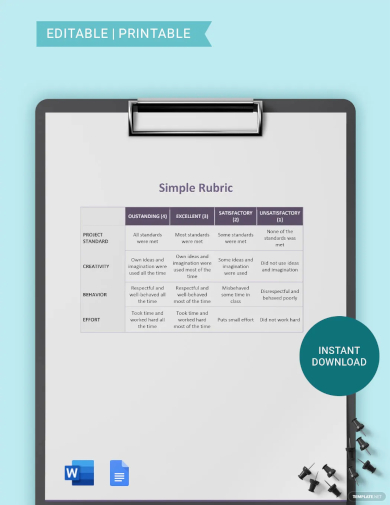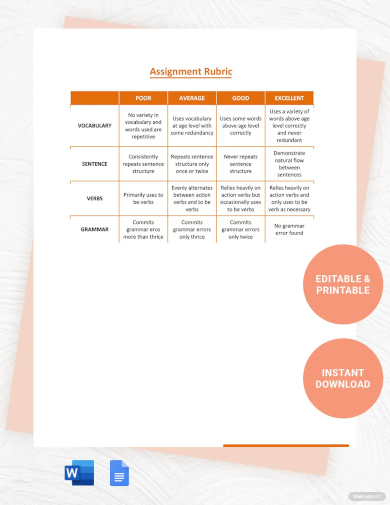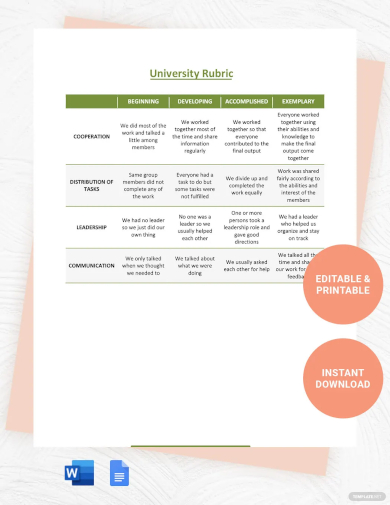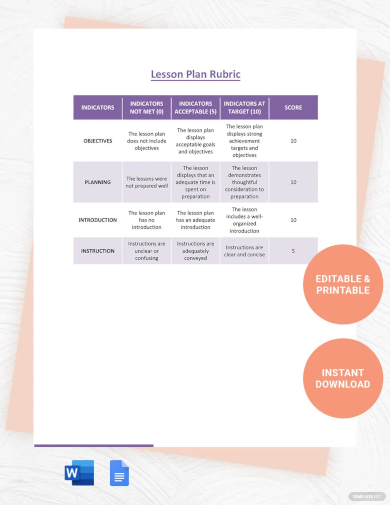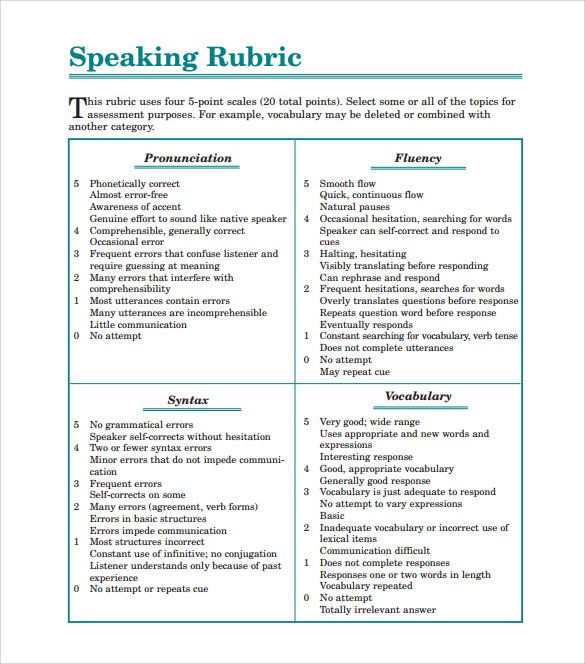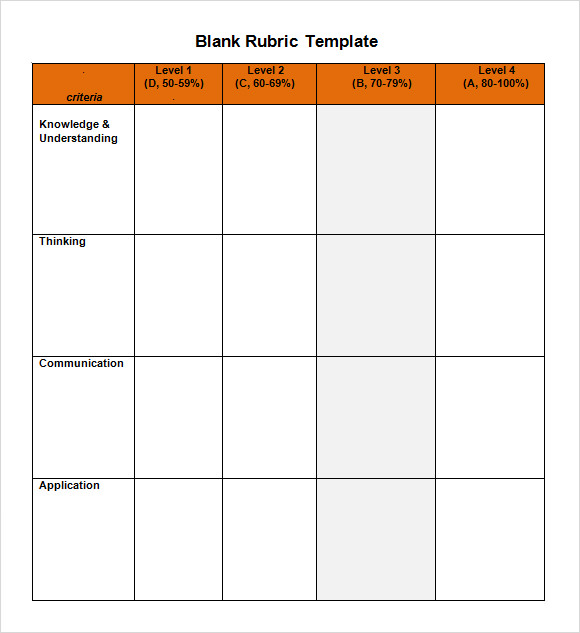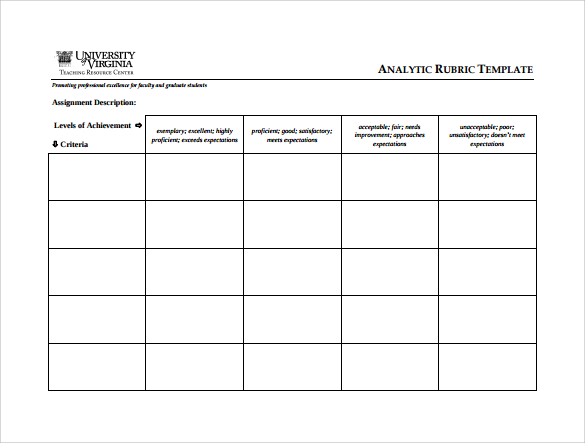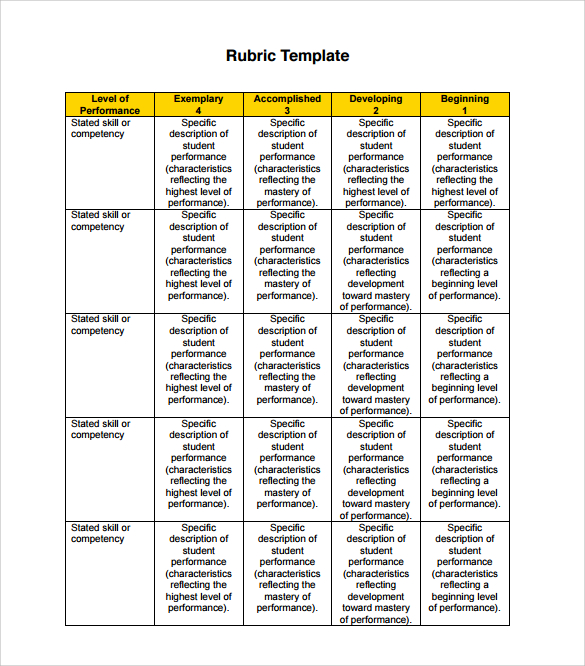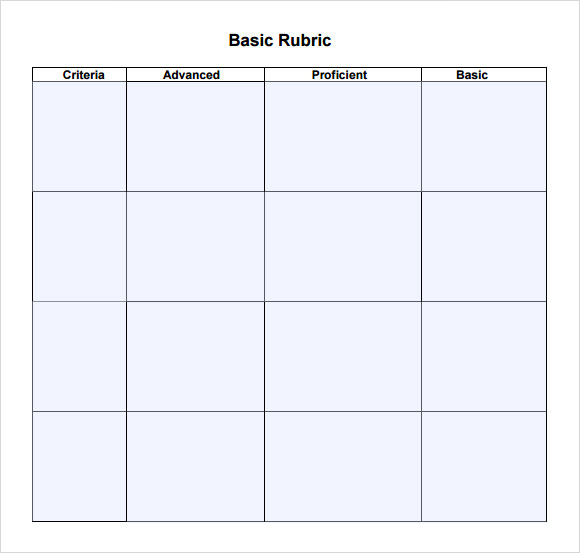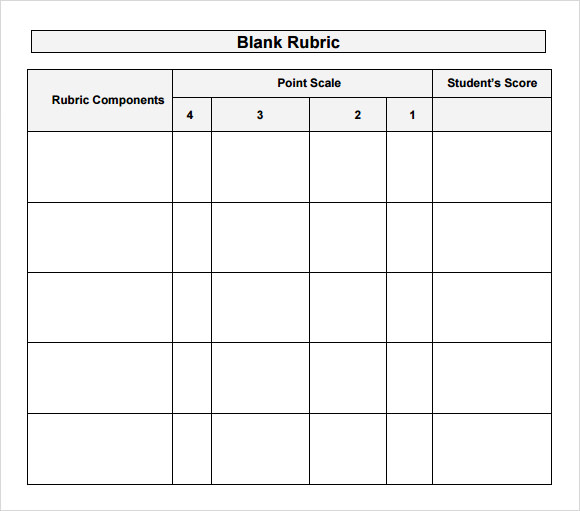Blank rubric template is mainly for teachers and professors for having a standard grading system to students for the whole school year. Rubric Templates are composed of different criteria and standards for having a best quality of work evaluation ; learning skills are graded and evaluated by teachers, which is common in some thesis defense, school projects, major examinations, research, classroom standing or group work.
This Blank Rubric Templates guides the teacher of what aspects and fields of the presentation or learning must be given with importance, evaluated and given with sample feedback in order to generate new information in order for the students to learn and give out the best performance they have to achieve the best standards of the project given to them.
Simple Rubric Template
Blank Assignment Rubric Template
University Rubric Template
Scholarship Rubric Template
Blank Lesson Plan Rubric Template
Sample Speaking Rubric Template
The template is designed uniquely and differently. Here the students are judged upon the pronunciation, syntax, vocabulary and fluency of the words.
The template will be consisting of different points allotted to each section to scale the performance review of the children in order to make a track record of the performance of the student.
Assessment Rubric Template
The template is designed under the supervision of the teacher to include the different fields to check and rate the performance of the student.
This can also include the co-curricular activities, internal sample assessments and the various promising qualities of the students like the habits of mind, techniques, efforts, responsibility and the craftsmanship. The students will be judged under the different categories mentioned on the template which can later be added to the score card.
Sample Rubric Template
The template will be needed at the time of the assessment of the work performed by the students. The score will be given according to the different categories mentioned in the blank rubric template.
The students will be judged on their performance and the academic skills. The template defines the performance evaluation of the students in the class which is necessary for the teachers to record.
Blank Rubric Template
The template is designed to note the performance of the students in the class. Designed with the purpose of maintaining records for the students, the templates will focus upon the criteria which could be communication skills, knowledge and understanding, thinking and sample application.
The teachers can customize the criteria and score the kids. The description can also be written making it more elaborative for the students to understand.
Analytic Rubric Template
Standard Rubric Template
Blank Rubric Example
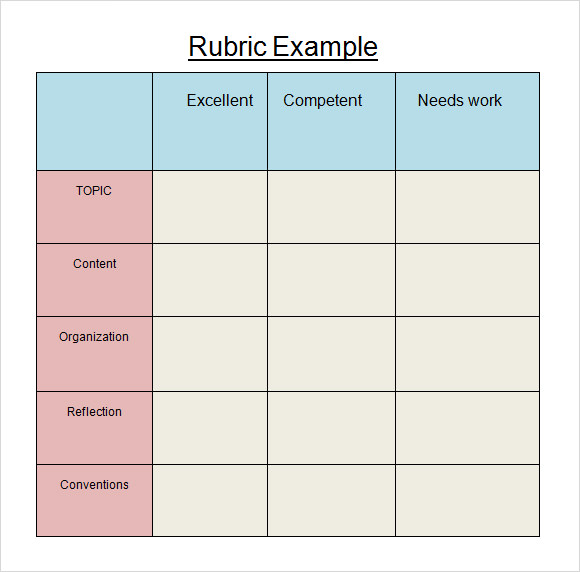
Blank Rubric Maker Template

Basic Blank Rubric Template
Printable Blank Rubric Template
Why need a Blank Rubric Template?
A teacher is responsible to enhance the performance of the students but it can only be possible if the teacher know where the student lags. The template is designed specially to have a track record which could later be added to the sample report of the students. This can later be used as a report that could be given to the parents to make them know their child’s performance.
When is the Blank Rubric Template Needed?
The template is specially designed for the purpose to serve as a report of the performance of the students. It can be required at the time of meeting to present it as an assessment report.
The template acts as an intermediation between the parents and the teachers. The teachers can maintain a track record of the student which could add on to the assessment reports of the child. You may also like Presentation Outline Templates.
Benefits of the Blank Rubric Template
- The Blank Rubric Templates are designed to guide the teacher to enhance the performance of their students with a perfect source of sample evaluation.
- It is for the purpose to have a standard grading system of the students for the whole school year.
- The template is designed by the experts to have different criteria and standards of learning.
The blank rubric template serves a good purpose for the teacher. It helps to make a record of the various co-curricular activities that the child is good at which could later be added on to the sample score card. It works as a feedback for the student’s performance that can be enhanced for betterment to increase the standards of working and learning skills.
If you have any DMCA issues on this post, please contact us!
Related Posts
Sample Business Card Templates
Sample Cashier Job Descriptions
Questionnaire Samples
FREE 10+ Sample HR Resource Templates in PDF
FREE 10+ HR Consulting Business Plan Samples in MS Word | Google Docs | Pages | PDF
FREE 49+ Sample Job Descriptions in PDF | MS Word
FREE 16+ Nonprofit Budget Samples in PDF | MS Word | Excel | Google Docs | Google Sheets | Numbers | Pages
FREE 13+ Academic Calendar Templates in Google Docs | MS Word | Pages | PDF
FREE 10+ How to Create an Executive Summary Samples in Google Docs | MS Word | Pages | PDF
FREE 23+ Sample Event Calendar Templates in PDF | MS Word | Google Docs | Apple Pages
Company Profile Samples
FREE 10+ Leadership Report Samples [ Development, Training, Camp ]
FREE 24+ Sample Payment Schedules in PDF | MS Word
FREE 10+ Return to Work Action Plan Samples in PDF | DOC
Autobiography Samples & Templates
